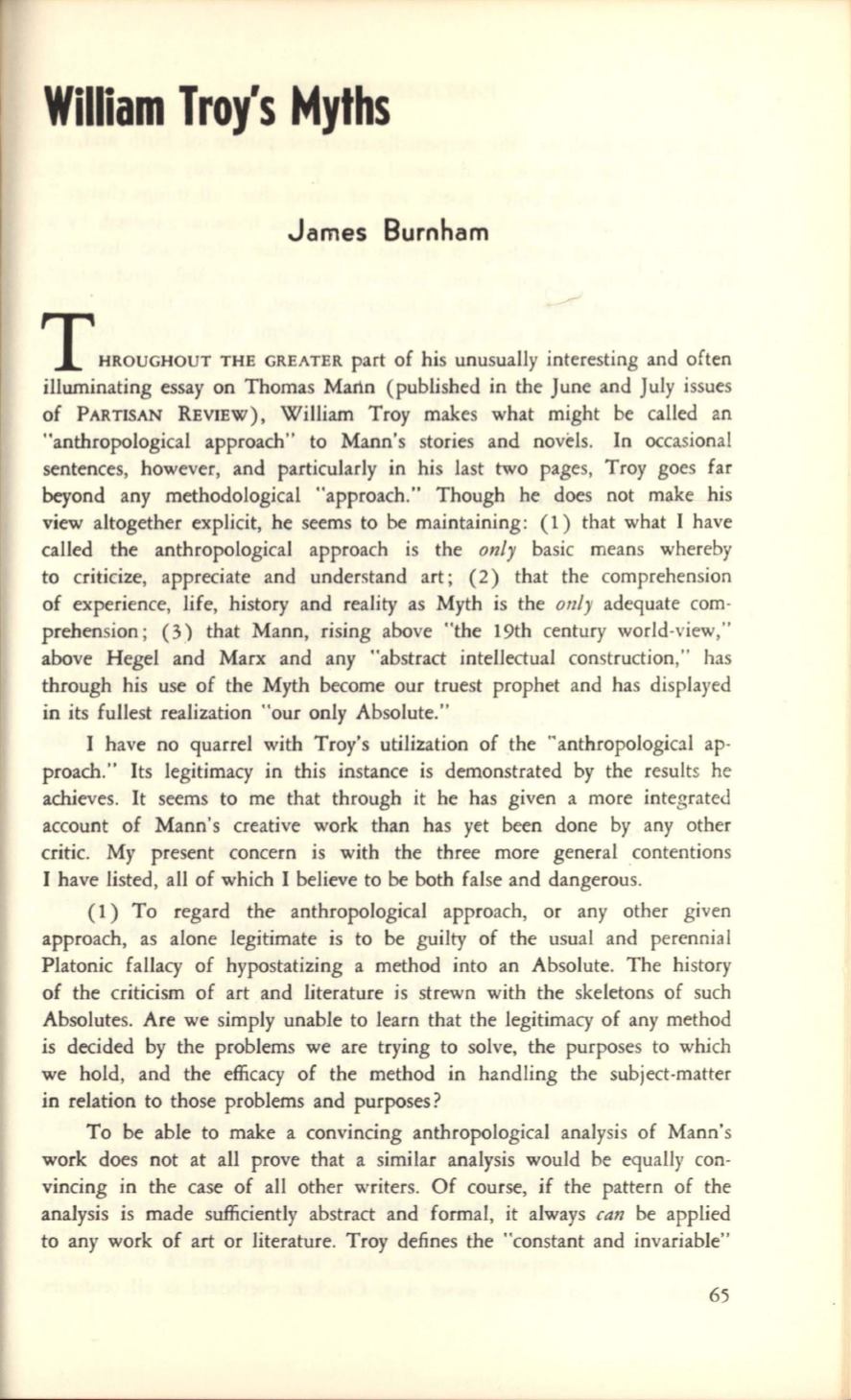
WilHam
Troy's Myths
J ames Burnham
~
T HROUGHOUT THE GREATER part of his unusually interesting and often
illuminating essay on Thomas Marin (published in the June and July issues
of PARTISAN REVIEW), William Troy makes what might be called an
"anthropological approach" to Mann's stories and novels. In occasional
sentences, however, and particularly in his last two pages, Troy goes far
beyond any methodological "approach." Though he does not make his
view altogether explicit, he seems to be maintaining: (1) that what I have
called the anthropological approach is the
only
basic means whereby
to criticize, appreciate and understand art; (2) that the comprehension
of experience, life, history and reality as Myth is the
only
adequate com–
prehension ; (3) that Mann, rising above "the 19th century world-view,"
above Hegel and Marx and any "abstract intellectual construction," has
through his use of the Myth become our truest prophet and has displayed
in its fullest realization "our only Absolute."
I have no quarrel with Troy's utilization of the "anthropologicll ap–
proach." Its legitimacy in this instance is demonstrated by the results he
achieves. It seems to me that through it he has given a more integrated
account of Mann's creative work than has yet been done by any other
critic. My present concern is with the three more general contentions
I have listed, all of which I believe to be both false and dangerous.
(1) To regard the anthropological approach, or any other given
approach, as alone legitimate is to be guilty of the usual and perennial
Platonic fallacy of hypostatizing a method into an Absolute. The history
of the criticism of art and literature is strewn with the skeletons of such
Absolutes. Are we simply unable to learn that the legitimacy of any method
is decided by the problems we are trying to solve, the purposes to which
we hold, and the efficacy of the method in handling the subject-matter
in relation to those problems and purposes?
To be able to make a convincing anthropological analysis of Mann's
work does not at all prove that a similar analysis would be equally con–
vincing in the case of all other writers. Of course, if the pattern of the
analysis is made sufficiently abstract and formal , it always
can
be applied
to any work of art or literature. Troy defines the "constant and invariable"
65


